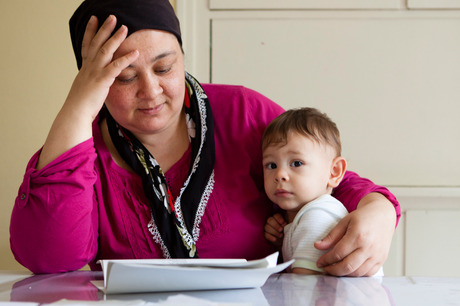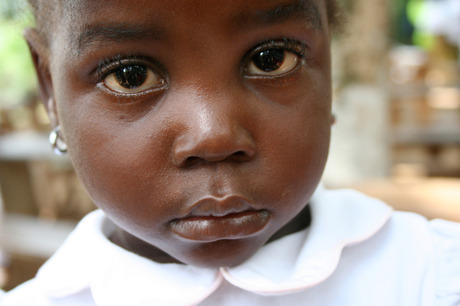rise, but what are the challenges faced by these children and their
families, and what approaches should the early years sector employ to
meet their needs? Anne O'Connor looks at what practitioners need to
know

Since 2013, we have seen unprecedented expansion in provision for two-year-olds, driven by the Government agenda for early intervention. Initially, this was targeted at the 20 per cent most disadvantaged in the age group, but in 2014 this was extended to 40 per cent, with a broadening of the criteria of eligible families.
Although there is still a shortfall in provision, many settings (including children's centres, childminders and schools) are now working with much younger or more vulnerable children than they have done previously.
Those numbers look set to rise again whatever the political hue of the next Government, making it more important than ever that early years practitioners understand the profiles of 'vulnerable families' and the essential principles for supporting them.
WHO IS VULNERABLE?
The criteria for funding for twos addresses parental circumstances as well as particular needs of the child. From a parent's perspective, income is the key descriptor. Parents must be in receipt of:
- income support
- income-based jobseeker's allowance
- income-related employment and support allowance
- support through Part 6 of the Immigration and Asylum Act
- the guaranteed element of state pension credit
- child tax credit (but not working tax credit) and have an annual income not over £16,190
- the working tax credit four-week run on (the payment you get when you stop qualifying for working tax credit)
- working tax credits and earn £16,190 a year or less.
From the perspective of the child, they are entitled to a funded place if:
- they are looked after by a local council
- they have a current statement of special education needs (SEN) or an education, health and care plan
- they get disability living allowance
- they have left care under a special guardianship order, child arrangements order or adoption order
This suggests that there may be a broad range of need among children and families and that 'vulnerability' is in itself a complex issue to work with.
Economic vulnerability
 There is no denying that many families are facing increasing economic difficulty and that this may have a powerful negative impact on their children's well-being, particularly in the earliest years of life. Child poverty has always been, as it continues to be, a major concern for society and current economic austerity measures can only make things worse.
There is no denying that many families are facing increasing economic difficulty and that this may have a powerful negative impact on their children's well-being, particularly in the earliest years of life. Child poverty has always been, as it continues to be, a major concern for society and current economic austerity measures can only make things worse.
We have to be clear, though, that having a low income does not in itself imply that the important aspects of family life, such as nurture and loving relationships, are at risk.
Nor does having enough money always ensure that a family is able to provide the physical safety, emotional security and fulfilling relationships that all children depend on for their well-being.
However, we should never underestimate the extra challenges that low income and financial difficulty present to many families, the effect this may have on their physical and mental health and the subsequent impact on their babies and young children.
Children with SEN and disabilities
Income may or may not be an issue for the parents of children with SEN and disabilities, although the presence of more than one criteria for funding can only mean increased challenges for families, perhaps being the difference between coping well and ultimately struggling to cope.
Where a need or disability has been identified before the child is two, the family will probably have already experienced a whole range of assessments and interventions, from a variety of agencies including medical and other professionals.
Parents may have become experienced advocates on their child's behalf - or may just be beginning to come to terms with the implications, as well as the daily experience, of meeting their child's needs and special requirements.
Regardless of their levels of knowledge and confidence, there is no doubt they will be experiencing a degree of challenge beyond that experienced by families with typically developing children, and will benefit from support by practitioners who are knowledgeable about special needs and disability (and inclusive practice) and are sensitive to a family's particular circumstances.
Looked-after and adopted children
It is encouraging to see that Government policy now acknowledges the special challenges families face when raising children other than those born to them - and in particular, that children placed for adoption continue to have many of the same needs they had when they were in care, despite their new 'forever' home.
Their parents also have a degree of vulnerability, and not just when children are newly placed with them. Many of the challenges faced by foster and adoptive parents relate to the trauma experienced by their children before they came to them. Increasingly, babies and young children placed from the care system (whether here or abroad) have not only experienced neglect or abuse but have also been damaged 'in utero', either through exposure to drugs and alcohol, or the effects of extreme stress and poor physical or mental health of the mother.
The impact of prenatal and early experiences do not fade just because the child has no memory of them or is now in a place of safety. The scars may be visible in the form of ill health and delayed development, but very often they manifest themselves in emotional and behavioural difficulties that are easily dismissed with an 'Oh, they all do that at this age!' Sadly, these parents are often facing behaviours that though possibly 'typical' are presented more frequently, more intensely and for a lot longer than is usual.
Of particular concern for these parents and carers is the importance of establishing bonds and secure attachments with their babies and young children, all of whom will have had either insecure or non-existent attachments - or at best, strong attachments that were then disrupted or severed by being adopted or taken in to care.
It is questionable, then, whether more change and transitions at the age of two are actually desirable for these children, even though they may need extra support and meet the criteria for funding. A flexible approach to supporting these parents has to be of prime importance here, whether in the process of slow, careful settling or agreeing shorter or fewer sessions, depending on how recently the child has been placed in the family.
Strategies that support the primary attachment with the parents/foster carers are absolutely crucial, so settings with an effective key person approach and a strong ethos of attachment-based care are best suited to supporting these families.
Even better, these families are ideally supported by well-run 'stay and play' sessions, staffed by experienced practitioners able to provide relaxed, social environments. Here, they can offer parenting advice and individual interventions, while supporting the growth and maintenance of the child's attachment with their parents and carers.
Multiple needs
As already mentioned, some families may be experiencing multiple 'vulnerabilities'. It is a sad fact that some families living on low incomes are also facing several other challenges, many of which can make looking after babies and young children a major challenge. For example, if a parent, teenage or otherwise, has a lack of support from a partner, friends or extended family, they can feel very isolated and this may have a strong bearing on their mental health.
If a parent has low self-esteem, poor self-confidence, learning difficulties or a disability that makes caring physically or emotionally for a child a challenge, then financial worries will only increase the difficulties that they face and put their children at greater risk.
Some parents may themselves have had traumatic and unstable childhoods, or experienced insecure attachments that leave them incapable of meeting their own children's attachment needs. Although insecure attachments are by no means confined to families on low incomes, there is evidence to suggest that generational cycles of deprivation and disadvantage can lead to difficulties establishing secure attachments and effective parenting.

SUPPORTING FAMILIES
Parenting programmes
Clearly, the best way to support vulnerable children must be to provide appropriate support for their parents. Despite the findings in 2008 by the Joseph Rowntree Foundation that the biggest changes in the quality of parenting (either improvement or deterioration) were associated with changes in the mother's physical or mental health, the Government has continued to see parenting programmes as a way of addressing the issue of 'poor parenting skills'.
There is no doubt that some parents are more receptive to these kinds of approaches than others. An evaluation of the Positive Parenting Programme ('Triple P') in Glasgow found that: 'Families living in deprived areas were more likely to start Triple P interventions, but those living in affluent areas were more likely to complete the course'.
The report did not suggest any clear reasons why the parents considered to be most in need of the intervention were the least likely to benefit from it, but perhaps it is worth referring back to a statement made by Donald Winnicott back in 1960: 'Mothers who have it in them to provide good enough care can be enabled to do this better by being cared for themselves in a way that acknowledges the essential nature of their task. Mothers who do not have it in them to provide good enough care cannot be made good enough by mere instruction.'
Severe though this sounds, it acknowledges several key issues. First, let us open it up to more than just mothers and look it at from the perspective of all parents. Then let us simplify the different aspects of the message. So:
- parents care better where they are cared for themselves
- parents care better when they - and the difficult task of parenting - are acknowledged
- some parents find parenting much harder than others
- instruction alone isn't what makes parents better parents.
The description of 'mothers who do not have it in them to provide good enough care ...' can be read as an indictment of mothers (parents) who are incapable of parenting well, and yet it is worth reminding ourselves of the reasons why some parents may not 'have it in them' to be able to parent without support.
As the Joseph Rowntree Foundation report pointed out, the reasons are most likely to be linked with parents' physical and mental health. As well as the 'vulnerabilities' listed earlier, we could add prenatal and postnatal depression as a major factor that not only affects parental mental health (fathers and adoptive parents experience it too) but also impedes bonding and attachment.

Possible approaches
There are several key approaches that support vulnerable families.
Focusing on attachment would seem to be a useful way of structuring approaches to support families, by emphasising the crucial importance of secure attachments and unconditional love, rather than behaviour modification rewards and consequences.
Recognising the significance of a parent's own early experiences, acknowledging that a parent who is themselves displaying attachment-challenged behaviour is likely to be wary and mistrustful of help or intervention. They are likely to feel very threatened by implied judgements of their parenting skill and allowing themselves to be helped will go against their instinct for self-reliance.
Acknowledging the role of fathers/partners and other family members, including them in programmes and emphasising their fundamentally important role in supporting the mother or child's primary attachment figure.
Providing therapeutic interventions that enable parents to understand their own experiences, helping them to create and nurture healthier relationships and more secure attachments within their families
Offering structured family support in familiar, neighbourhood locations such as children's centres, where intensive work can be done with individuals, ultimately enabling them to have the confidence to embark on (and stick with) group approaches, knowing that support is on hand should they waiver and falter.
Types of provision
Currently, there is scope for extra places for referred two-year-olds in vulnerable families in settings where there is already provision for this age group, but also in schools and settings with provision for older children, and with childminders.
High-quality childminders are ideally placed to provide individualised support for vulnerable parents and to promote and strengthen insecure primary attachments, as are children's centres with experienced family support workers.
However, regular training and supervision is still an issue, and this is also true for any setting that has little experience of working with very young children and addressing the needs of their parents.
Practitioner training needs
The first stage of a recent report from early years professional development association TACTYC looking at the experience of practitioners who have already begun working with these children and their families (Two-Year-Olds in England: an exploratory study) emphasises the point that 'we are asking a lot from early years practitioners and that they need to be both well prepared and well supported in the work they are being asked to do' in order to meet the two-year-old offer.
While the practitioners who submitted evidence to the report agreed with the core principles of the initiative in supporting disadvantaged and vulnerable children, they stressed that although 'success' for them was 'having a child who felt safe and secure in their early years environment, with parents who trusted the setting ... they were concerned that such views of success were not always valued within current policy frameworks.'
They were also very clear that as 'relationships with families are a key feature of quality provision for two-year-olds' then practitioners must be skilled in working with families and have the 'capacity to foster positive relationships' with them.
We must not wait any longer before we draw on the implications of this report. Two-year-olds from vulnerable families need settings that:
- their parents can trust, and which form positive relationships with them
- have practitioners with the capacity and who are sufficiently skilled at working with families to be able to create that trust and foster those good relationships.
This is true whether the setting is a day nursery with lots of experience in caring for two-year-olds, a childminder working with a single two-year-old and their family, or a school extending its provision to include two-year-olds for the first time.
Regardless of Government agenda, if this initiative is to make a positive difference to children's lives we must ensure the setting is the most appropriate place for these children - and can provide the most appropriate skilled support for their parents.

MORE INFORMATION
Visit our practice guides pages for essential guidance to help you support vulnerable children and their parents:
- - Attachment, www.nurseryworld.co.uk/attachment
- - Challenging behaviour, www.nurseryworld.co.uk/challenging-behaviour
- - Inclusive practice, www.nurseryworld.co.uk/a-zinclusive-practice
- - Key people, www.nurseryworld.co.uk/key-people
- - Well-being, www.nurseryworld.co.uk/well-being
REFERENCES AND READING
'All About ...child neglect' by Anne O'Connor, www.nurseryworld.co.uk/nursery-world/feature/1095385/eyfs-practice-about-child-neglect
Diversity, Complexity and Change in Parenting by Andrew Waylen and Sarah Stewart-Brown (2008), Joseph Rowntree Foundation
Donald W Winnicott: a new approach by Laura Dethiville
Two-year-olds in England: an exploratory study, (stage one report: literature review and key informant interviews, 2014) by Jan Georgeson, Verity Campbell-Barr and Sandra Mathers et al (TACTYC and Plymouth University), http://tactyc.org.uk/wp-content/uploads/2014/11/TACTYC_2_year_olds_Report_2014.pdf. The final report is available at http://tactyc.org.uk/projects
- 'The Theory of the Parent-Infant Relationship' by D W Winnicott in International Journal of Psychoanalysis, http://icpla.edu/wp-content/uploads/2012/10/Winnicott-D.-The-Theory-of-the-Parent-Infant-Relationship-IJPA-Vol.-41-pps.-585-595.pdf
- 'War of words on "failing" city parenting scheme', www.eveningtimes.co.uk/news/war-of-words-on-failing-city-parenting-scheme-188170n.25830823.
TWOS: THE DRIVE FOR HIGH-QUALITY PROVISION
Join us in London on 2 July for our conference, Two-Year-Olds: The Drive For High-Quality Provision. Drawing on the latest research into provision for two-year-olds, the event outlines challenges and solutions to meeting the emotional and learning needs of twos.
- Find out the key features of quality provision.
- Learn how to measure quality more effectively using environmental learning scales, old and brand new.
- Hear experts talk on communication and language development and the essential links between physical development and cognition.
- Gain practical ideas to stimulate play and promote learning.
- Understand how to work with vulnerable families and help parents support their children's learning.
- Extend your knowledge of schemas and their role in two-year-olds' learning.
- Explore the scope of outdoor learning for two-year-olds.
- Hear a case study of two-year-olds in school.
- Learn how to support language development through rhythm, rhyme, song and story.
For more information, visit www.two-year-olds-conference.com/56630









